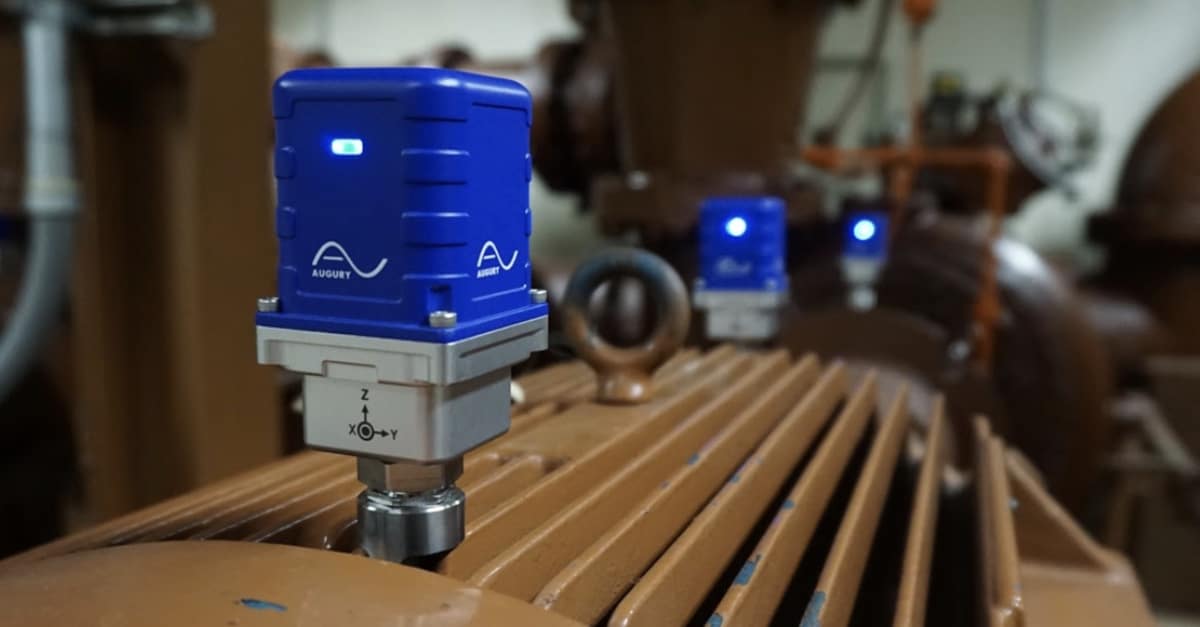
Why is measuring magnetic flux essential for interpreting vibration data related to the health of your machines? “It provides the context you and the AI need to make accurate and trustworthy predictions – without any false alerts,” according to Augury solutions architect (and VA) Andrew Pry. So why is measuring magnetic flux only now becoming a standard part of a VA’s toolbox?
Once upon a time, it was an easy call to know if a change in vibration on your rotating asset was something to worry about. You’d be in the factory, so when you registered a speed change with your handheld, you could do your own inspection or go to the operator and just ask if there were any changes. In other words, you could always check whether the machine is actually operating under the same conditions as when you last measured it.
But there was a downside: you’d have to be very lucky to be on hand at that moment when a speed change signaled an impending problem that could cause unplanned downtime.
This is the power of constant remote sensing: you can pick up these changes in near real-time and then act in time to solve such problems before they become real problems.
Welcome to the wonderful world of Machine Health.
How To Stop Flying In The Dark
But with remote sensing, you don’t know what a change in vibration means. In fact, there are many possible reasons. With factories being noisy places, maybe it was just an overall change in external vibration. Or perhaps the endpoint moved. Or maybe management decided to push production as a prelude to a planned downtime. Or maybe it was those pranksters in Operations playing with their dials again… Etcetera.
This is all stuff you need to figure out when working remotely. Vibration analysts need multiple sources of information to properly interpret an asset’s condition in real-time. But this takes time and effort. It’s much easier if you have a single source to tell you all you need to know to make the best possible decision.
This is the magic of measuring the magnetic flux going through the motor concurrently with your vibration readings. If it’s there, you know the motor is running. As the alternating current fluctuates between positive and negative, you can then also calculate the actual speed of the motor…
And now you are getting somewhere…
A Single Source Of – Constant – Truth
When I started at Augury a few years ago, we were the only ones measuring magnetic flux. People still needed to rely on their handhelds – and hope their manual inspection aligned with an impending problem so it could be caught. With Augury’s solution, the monitoring was remote, automatic, and constant.
And with a continuous condition-based monitoring system comes many advantages. Instead of measuring, say, once a month, you’re measuring, say, every hour or less. It also opens up the opportunity to have one sensor giving you all the information you need – instead of relying on another outside source of information, may it be an operator or a whole other system.
“I would love to describe the whole dance between vibration and magnetic flux. It fascinates me how their signals almost line up – even though they are seemingly wholly separate phenomena.”
The Dance Between Vibration And Magnetic Flux
If I had the space, I would love to describe the whole dance between vibration and magnetic flux. It fascinates me how their signals almost line up – even though they are seemingly wholly separate phenomena. And it amazes me how we can leverage this near-alignment to discover many interesting insights.
For instance, we can measure slip. And as slip increases, we know the machine is working harder, and its power requirements are increasing. It could be a bad sign. But it could also mean a change in load. By knowing the difference, we can really reduce false alarms.
And there are all sorts of things we have learned over the millions of machines we’ve monitored. Let’s give two examples…
Case Study #1: Avoiding The Unsweet Spot
On one level, the measuring of magnetic flux was developed as a way to automate continuous monitoring, but it was also developed so we could track a machine’s vibration against its different speeds to determine whether it has a resonance condition – a whole topic in itself.
Each machine has its own natural frequency, and if you operate that machine at a speed that coincides with that natural frequency, this causes resonance – which creates a whole lot of vibration.
Happily, we can avoid such situations – and thereby likely extend the life of a machine – by paying attention to any machines that have seemingly big and random vibration spikes. If we pull up the magnetic frequency data to see how fast the machine was running at all those different times, we often discover the machine was actually running at the same speed each of those. Now, we’re sure it’s a clearcut case of resonance.
Our customers can then choose to avoid that speed in the future, or re-engineer that particular machine to change its natural frequency.
“Pump happy, we’re happy.”
Case Study #2: Re-Establishing The Sweet Spot
Many of us know pumps are fussy beasts – and almost human-like in how they hate change. Pumps like to operate in a sweet spot called best efficiency point (BEP). That’s the point where, hydraulically, the pump is in its most stable condition.
I remember one time, a chiller water pump had undergone maintenance, and when it was turned on, it produced a lot more vibration than usual. Here, you worry about cavitation, a potentially catastrophic implosion on a piece of metal inside the machine. The maintenance team was warned, and they investigated. It turned out the tank levels were not right so they made the required adjustments to put the pump back into its ideal flow conditions.
Thanks to measuring magnetic flux, we could remotely detect an operational change – not just a speed change. Pump happy, we’re happy.
“What makes Augury technology so powerful is how we’ve built out hundreds of such ‘feature sets’ that help account for our nearly 100% accurate diagnostics. And many of these are thanks to measuring the magnetic flux.”
Now, To Bring The AI Up To Speed
In the name of automation – and making everyone’s job easier – we take these clearly interpreted scenarios we discover and train our AI to recognize them. In other words, we flag those things that the AI should pay attention to, so then, if needed, the algorithm can flag those situations that the maintenance team should look at.
What makes Augury technology so powerful is how we’ve built out hundreds of such “feature sets” that help account for our nearly 100% accurate diagnostics. And many of these are thanks to measuring the magnetic flux.
So, consider this a public service message: if you are not yet doing it, measuring magnetic flux is a crucial part of understanding vibration analysis. It’s a particularly powerful tool if you take this measurement at the same time you’re measuring the vibration because you can more easily correlate these two very interdependent variables and gain all sorts of real-time insights.
Fortunately, for both manufacturers and their machines, this approach is becoming an industry standard. But yes, it’s a whole other job to gather enough information to build out an AI that can turn all this information into accurate and reliable actionable insights.
All hail, magnetic flux.
To learn more about vibration analysis, check out our webinar series.
To learn more about our approach, just reach out!






